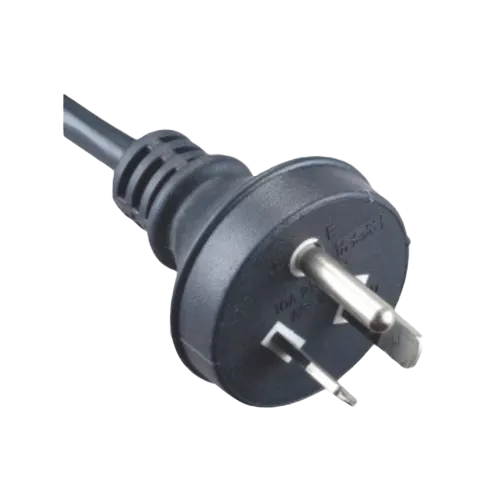Ensuring that Australian Standard power cords are properly grounded is essential for preventing electrical hazards. Here are some steps to ensure proper grounding:
Use Three-Pronged Outlets: The implementation of three-pronged outlets is fundamental to adhering to Australian electrical standards. These outlets are specifically designed to accommodate the three-pronged plugs commonly found on Australian Standard power cords. The presence of the third prong, known as the earth pin, is crucial as it serves as the grounding connection. This grounding provision is essential for diverting fault currents safely to the ground, thereby minimizing the risk of electric shock and potential damage to equipment. Utilizing outlets without the proper grounding provision not only compromises electrical safety but also violates regulatory requirements.
Check Outlet Polarity: Polarity testing is a critical step in ensuring the integrity of the electrical installation. Using a polarity tester or multimeter, users can verify that the active, neutral, and earth connections within the outlet are correctly aligned. In a properly wired outlet, the earth pin should be securely connected to the grounding system, while the active and neutral terminals maintain the appropriate polarity. Any deviation from the expected polarity may indicate wiring errors or faults within the electrical system, necessitating immediate attention from a qualified electrician to rectify the issue and mitigate potential hazards.
Inspect Power Cord: Regular inspection of power cords is paramount to identifying any visible signs of wear, damage, or degradation. Fraying, cuts, exposed wires, or compromised insulation can compromise the structural integrity of the cord, rendering it susceptible to electrical faults and posing significant safety risks. Users should conduct thorough visual inspections of power cords, paying close attention to areas of high stress or frequent bending, such as near plugs and connectors. Any cords exhibiting signs of damage should be promptly removed from service and replaced with new ones to maintain compliance with safety standards and mitigate the risk of electrical hazards.
Ensure Proper Connection: Achieving a secure and stable connection between the power cord and the outlet is essential for reliable electrical conductivity and safety. Users should ensure that the plug is fully inserted into the outlet, with all prongs making firm contact with their respective terminals. Loose or intermittent connections can bring about increased electrical resistance, overheating, and potential arcing, all of which pose significant fire hazards and can result in equipment damage or electrical shock. Users should refrain from using damaged or modified plugs that may compromise the integrity of the connection and pose safety risks.
Avoid Overloading Circuits: Overloading electrical circuits is a common cause of electrical fires and equipment damage in both residential and commercial settings. Users should be mindful of the electrical load requirements of their appliances and avoid exceeding the rated capacity of circuits and outlets. Distributing electrical loads evenly across multiple circuits helps prevent overloading and ensures electrical performance and safety.
Use Ground Fault Circuit Interrupters (GFCIs): Ground Fault Circuit Interrupters (GFCIs) play a critical role in enhancing electrical safety, particularly in areas where water or moisture is present. These devices are designed to detect ground faults, such as current leakage to unintended paths, and quickly interrupt electrical power to prevent electric shock and potential injury. Installing GFCI outlets in kitchens, bathrooms, laundry rooms, outdoor spaces, and other wet environments is mandated by electrical codes and standards to provide enhanced protection for users and mitigate the risk of electrical hazards associated with ground faults.
A3-10B Argentina three-pin pure copper power plug cord



 English
English عربى
عربى











